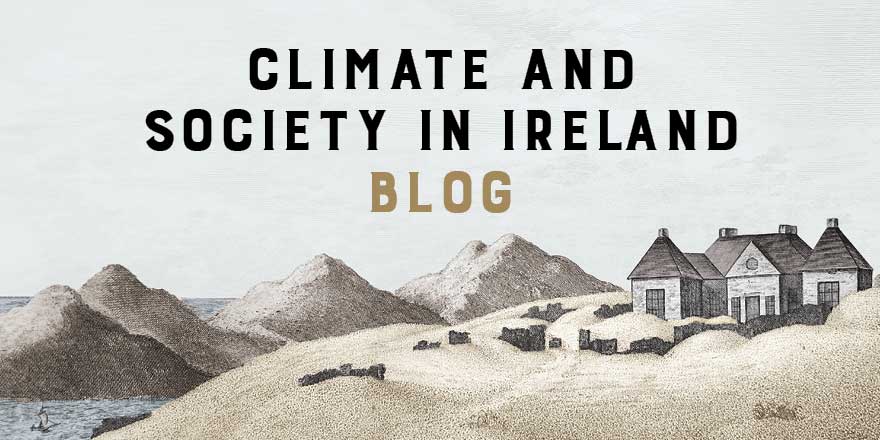
How did environmental change influence human activity in Irish bogs?
15 September 2021In today's blog on Climate and Society in Ireland, Phil Stastney introduces a review of research on past human–environmental interactions in Irish peatlands.
Climate and Society in Ireland is a collection of essays, commissioned by the Royal Irish Academy, that provides a multi-period, interdisciplinary perspective on one of the most important challenges currently facing humanity. In Chapter 3, Phil Stastney (Museum of London Archaeology) examines the ways in which peatland archaeological and archaeo-environmental datasets have been interpreted and understood.
Peatlands cover approximately one fifth of the surface of the island of Ireland, and are well established archives of palaeoenvironmental data, preserving sensitive records of past climatic change. Irish bogs are also well-known for their internationally-important archaeology, with over 3,500 peatland structures, mostly timber trackways of various kinds (see Fig. 1), recorded in the Irish Sites and Monuments Record. Ironically, this vast archaeological record has largely been revealed by the exploitation of bogs for peat extraction, a process which threatens this resource and add surgency to the need to adequately record and understand it. Meanwhile, increasing recognition of anthropogenic climate change since the 1990s has renewed interest in human–environment interactions. Given the direct association of archaeological and palaeoenvironmental data in Irish bogs, peatland trackways present an opportunity to study in microcosm the relationship between past human activity and environmental change. As concerns about the impacts of future climate change and the loss of the Irish peatland archive grow, so too does the importance of investigating past human–environmental interactions in these unique, and ultimately irreplaceable, settings.

The purpose of this paper is to provide a review of research on past human–environmental interactions in Irish peatlands, and in particular to critically examine the ways in which peatland archaeological and palaeoenvironmental (‘archaeo-environmental’) datasets have been interpreted and understood. Following a brief overview of the literature, it becomes clear that there is no consensus on the influence of past environmental change on human activity in Irish bogs. In order to explore the reasons for this, the specific methodological challenges and theoretical considerations associated with the study of peatland archaeo-environmental datasets are then explored. A case study from a small group of bogs in Co. Tipperary is then introduced to illustrate these methodological issues and to evaluate a number of contrasting interpretive approaches, including a novel technique borrowed from the emerging field of ecocriticism. Finally, the various approaches are discussed and evaluated in relation to methodological and theoretical considerations, and the following overarching research questions are addressed:
1. What are the methodological challenges inherent in comparing the archaeological and palaeoenvironmental datasets obtained from Irish bogs?
2. What underlying theoretical assumptions underpin existing interpretations of past human–environment interactions in Irish bogs? Could theoretical developments in other disciplines offer any new insights?
3. How, armed with an understanding of the methodological challenges and recognition of underlying theoretical assumptions, could such novel insights be applied in practice?
To continue reading, purchase Climate and Society in Ireland.



